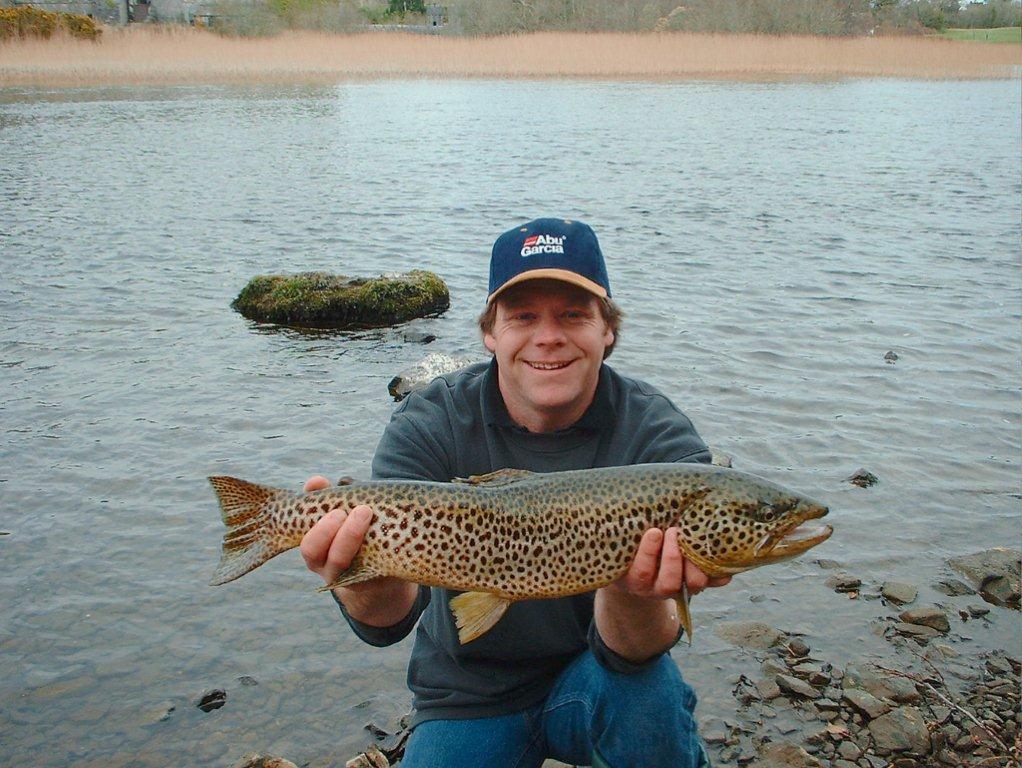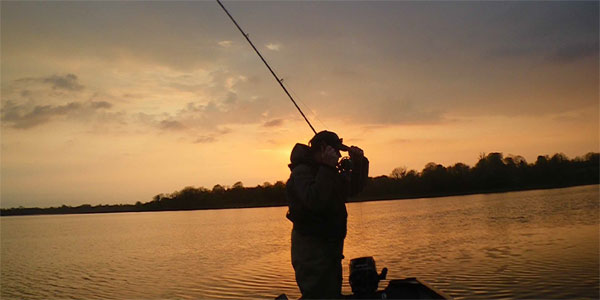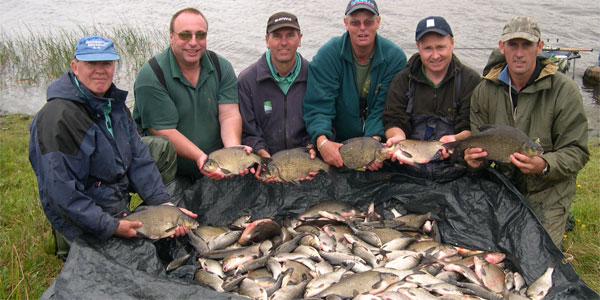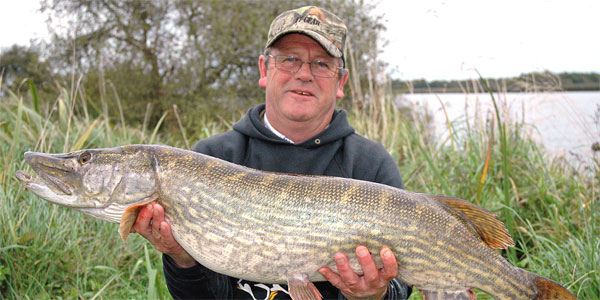Trout Fly Fishing Guide for Ireland
Kevin Lyons has over 30 years experience with angling in Ireland.
If you’ve ever dreamt about catching wild brown trout in Ireland and wondered how to turn your dream into reality then the answer is at your finger tips, contact Kevin at Melview Lodge and he will help you get the most out of your trip.
With a huge network of rivers and Loughs, Ireland is the one of the few last refuges for truly wild trout attracting anglers back year after year. This useful guide provides information on Irish fishing conditions, where to find specimens and suggested methods to help in the pursuit of that catch of a lifetime.
The brown trout (Salmo trutta) or Breac Donn (Gaelic) is a native Irish species and the most widely distributed freshwater fish in Ireland. It thrives in waters of all types, from small mountain streams to broad limestone rivers and Loughs. Its main requirements are clean water and gravel in which to spawn.
Ireland has 16,000 km of main river channel and 10,000 km of tributary which are unspoilt and relatively unpolluted. They provide ideal habitat for trout. In addition, there are in excess of 500,000 acres (200,000 ha) of Loughs.

The habitat of the wild brown trout is diminishing all over Europe and at the same time the majority of fly fishing for trout has an artificial character based on catching ‘rainbows’. In this respect Ireland offers the essence of the sport – the pursuit of wild trout taking hatching fly in natural waters.
Irish trout can and do achieve a large size. Every year trout over 10 lbs are caught with the occasional one up to 20 lbs. The trout angler can use a wide range of methods including, bait, spinning and fly fishing.
Licences and Permits
In general a licence is not required to fish for trout in the Republic of Ireland – except in the Loughs Agency waters in counties Donegal and Louth as well as within Northern Ireland.
The majority of waters are owned either privately or by the State. Many are leased to angling clubs or associations. A fishing permit issued by the owner or the lessee gives the permit holder the right to fish for set periods ranging from a day to a season. In the Republic of Ireland, permits for the best waters generally cost between €10 and €20 a day. Many of the big western Loughs offer free fishing for brown trout.
Some fisheries such as Loughs Mask, Corrib, Conn, Derg, Carra, Ree, Cullin, and Arrow do not require permits.
Most trout fisheries open between February 15th and March 1st and close on September 30th with some exceptions that close on various dates between September 15th and October 12th. Some clubs may have their own regulations on opening and closing dates.
Irish Wild Brown Trout
Brown trout thrive in most waters and as such are found well spread over most of Ireland. In many areas fisheries are specifically managed for them; however they are also found in waters containing large stocks of pike and coarse fish. Irish trout come in a variety of forms; Sonaghan, Gilaroo, Harvester, Croneen, Dollaghan, Ferox even Slob and Sea trout. Sonaghan are unique to Lough Melvin.
Gilaroo favour Loughs and rivers with a good and healthy population of freshwater snails and shrimps such as Lough Mask and Corrib.
Harvester, Croneen and Dollaghan are large trout that run from some of our large Loughs up tributary rivers and streams from July onward. These fish grow to an enormous size with Dollaghan of 15lbs plus not unheard of. Harvester trout generally associated with Lough Erne, Croneen with Lough Derg and Dollaghan with Lough Neagh. They can all be seen as the same type of inland sea trout.
Ferrox are to be found in some of the larger Loughs feeding on char and other fish. Loughs Melvin, Corrib, Ree and Derg are well known for these large predators and are often taken by pike anglers as a by-catch.
Rainbow trout (Oncorhynchus mykiss) are also found in Ireland, the majority restricted to small ‘put and take’ lakes. Native to North America they were not stocked in Ireland until 1899. They are fast growing; in Lough Acalla for example they have been recorded growing from 4oz to 4lbs in just two years. They are short lived, living for 3 or 4 years although triploids (sterile females) can live for 7 to 10 years.
Fact
The official Irish record trout (Lough / Lake) has stood for a long time, it is held by William Mears who took this leviathan of 26 lbs 2oz from Lough Ennell in 1894. The record for rivers is somewhat smaller at 20lbs. This was taken by Major H. Place on the River Shannon on the 22nd February 1957. The fish was caught on a slotted silver Devon minnow.
Feeding Patterns and Seasons
 Most brown trout fisheries open between February 15th and March 1st. Most close on September 30th with some exceptions which close on various dates between September 15th and October 12th. Clubs may have their own regulations on opening and closing dates.
Most brown trout fisheries open between February 15th and March 1st. Most close on September 30th with some exceptions which close on various dates between September 15th and October 12th. Clubs may have their own regulations on opening and closing dates.
The behaviour of trout depends on the amount and type of their food supply. This will depend on the habitat. Trout in the nutrient rich / limestone waters will have a good and constant food supply but those in more acidic waters have to be more opportunistic in their feeding patterns. Warm settled periods tend to lead to large fly hatches and these will usually trigger trout to feed on the surface. In limestone habitats the trout will spend a lot of time ‘grubbing’ around the bottom and in weeds for food, but in more acidic waters with poorer food supplies they will be more focused on food blown onto the water.
Behaviour can be greatly affected by many factors, including the month, prevailing weather conditions or even the time of day.
Early in the season, most fish will be feeding hard to regain condition after the rigors of spawning and the restricted food supply of the winter. Trout in the Loughs will feed on hog louse and shrimp but will rise for the early hatches of duck fly.
Ireland is justly famous for its mayfly hatches that can start as early as April and go through to July, though the peak of the hatch varies from Lough to Lough.
Warm summer evenings herald the arrival of the sedges and toward the end of the season the trout may be given a final feast of daddy long legs (crane flies) that can produce excellent top of the water sport.
It is also worth keeping an eye out for trout feeding on fry in the autumn. This is a very rich food supply and allows trout to put on plenty of weight. This will often also lure the larger fish to come and join in the feast.
Limestone rivers generally produce heavy hatches of ‘up winged flies’ (ephemeroptera). These start with the large dark olive of early spring, to medium olives, iron blue duns and the blue winged olives in summer.
Sedge species are also an important food supply particularly as the summer progresses. It is important to be aware of these species and have a few suitable patterns to hand, as when they hatch in large numbers trout can get totally preoccupied.
Throughout the season aquatic hatches are boosted by the appearance of terrestrials such as the hawthorn, beetles, cow dung and of course daddy long legs. In addition such streams will have large populations of crustaceans.
The trout of more acidic rain-fed rivers tend to be more opportunistic feeders. Such rivers may well have hatches of ephemeroptera, but terrestrial flies will be more important here, especially in upland or Moorland Rivers. The dry fly will catch, but the wet fly is more important, as is a selection of more general and less imitative flies.
The time of day is important. Early in the year feeding is often restricted to warmer times of the day from 11 to 14.00. However as the year progresses trout do not like bright light and so in summer their feeding can be restricted to early morning and late evening. Dawn can be a magical time on many fisheries with hatches of fly from 4 am onwards. Conversely all trout anglers will be familiar with the evening rise. When the sedges are around this can last all night.
Large trout are large because they are careful. However, anglers do have an opportunity to catch one of these fish when water is clearing after a flood or during large hatches of fly on Loughs. Many specimen brown trout have been caught during the mayfly hatch, when chasing sedges in the dusk or taking a trotted worm. Behaviour will vary on different waters during the year.
Climatic Influences on Irish Wild Brown Trout
Trout may be fished for from February through to October. At all times the fishing depends on prevailing weather, water levels, barometric pressure and temperature. The influence of the Irish climate, as well as the habits of the trout, also has to be taken into account. Most Irish rivers and Loughs are subject to seasonal rhythms of high and low water. The high winds of spring and autumn can render boat fishing on the bigger Loughs unsafe for short periods. However, trout fisherman in Ireland can usually find sheltered waters available when others are affected by floods or gales… Hot summer temperatures are probably the only time of year when trout are not active during the daytime period.
Climate & Weather Forecasts
Ireland has a temperate climate, with rain falling throughout the year. As a rule, the further west one goes the wetter it gets so this means that the angler should pay close attention to local weather forecasts prior to fishing.
At all times the fishing will depend to some extent on prevailing weather, water levels, barometric pressure and temperature. Most Irish rivers and Loughs are subject to seasonal rhythms of high and low water. The high winds of spring and autumn can render boat fishing on the bigger Loughs unsafe for short periods. If going afloat on one of the large Irish Loughs it is essential to get a weather forecast and plan the day accordingly
Trout Fishing Methods
General methods – Bait, spinning and all the various methods of fly fishing, (including dapping) can be utilised in pursuit of Irish trout. When and what works best depends on the time of the season, time of day, prevailing weather and water conditions as well as the ability of the angler.
It is important for anglers to check on the methods allowed on the stretches / areas of water they intend to fish. The permit issuer should be able to provide this information.
Fly fishing
Fly-fishing the Irish Loughs is predominantly with wet fly but on occasions when the fly is ‘up,’ dry fly is also popular. When fishing with a wet fly, it is usual to use a team of three or four flies, often fishing a relatively short line and ‘dibbling’ the bob fly on the surface. On rivers the approach tends to be more imitative using dry fly or nymph.
Dapping, though not as fashionable or popular as it once was, is a quintessentially Irish way of catching trout and salmon, either using artificial fly or the real thing. There can be nothing more relaxing than drifting on a soft day, with a good wave making a fly dance across the tops of the waves with trout in pursuit.
As for which flies to use, there are legions of trout flies, many of them of Irish descent including Dabblers, Goslings, Mayflies, Daddy-long-legs and of course the Bumbles (made famous by Kings mill Moore)
Other methods
Spinning can be very effective. On rivers small mepps, rappala and natural minnow can be very effective particularly when spun up stream. On the large Loughs every year numerous specimen trout are taken on the troll.
Trolling accounts for a large number of fish every year. This can be done using both artificial and natural baits. The introduction of downriggers and echo sounders has increased the efficiency of this method over the last few years. This method probably accounts for the majority of the large brown trout taken from the Loughs every year.
Bait fishing in all its forms will produce trout as many coarse anglers can testify who catch them unintentionally on everything from maggot and hemp to plastic sweet corn. Trout are opportunistic feeders and will take a wide range of baits, worm being the first bait most would think of.
Fly Fishing Tips for the Angler in Ireland – Essential kit
The starting point is a good set of waterproofs!
If going afloat it is a legal requirement to wear a lifejacket or buoyancy aid and for safety (particularly if fly fishing) a hat and glasses. Consider a good net , and the taking of fish for the table is not encouraged by Melview Lodge fine as we promote ‘catch and release’ to ensure healthy stocks for the future.
In general for fly-fishing from a boat on Loughs a rod of (10 or 11 feet) rated AFTM 6–7 will cover most eventualities. On rivers an 8 or 9 ft AFTM 5 – 6 rod is required.
It is important to bear in mind that trout fishermen may come across sea trout, pike or salmon when fishing for trout. They will all readily take a trout fly, lure or bait. As such it may be worth considering the level of tackle being used.
For spinning, a light spinning rod (of about 8-10ft) with 8–10lb monofilament line on a fixed spool reel will suffice for most conditions.
Longford town has tackle shops where leaders and flies may be bought – and advice sought. The Irish fly patterns for trout have long been famous and the visiting angler may wish to collect a selection to try in their traditional setting. Fishing tackle shops can be excellent centres for local information and usually also sell fishing permits for local waters.

Angling Reports
Kevin Lyons from Melview Lodge compiles angling reports for the area for many angling information sources, and these are compiled on this website.
Coarse Angling Gallery
Melview Lodge specialise in accommodation for anglers and we've had hundreds of guests with great catches. This gallery contains just some of the coarse catches our guests have made.
Pike Angling Gallery
Many come to Melview Lodge for the challenge of Irelands great pike fishing - this galley contains some photos of the pike our guests have caught.

